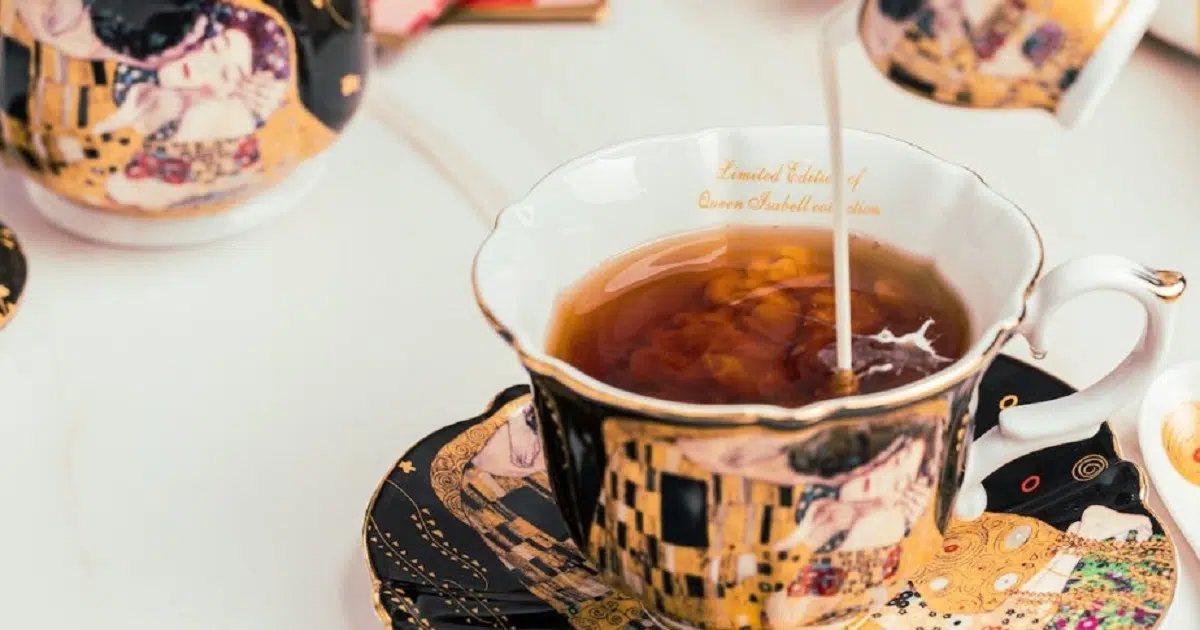When I first saw milk being poured into tea, I froze in disbelief, my mind screaming, “Wait—what are you doing?” For me, tea was something to be paired with a squeeze of fresh lemon, maybe a spoonful of honey if I was feeling indulgent, but never, under any circumstances, milk. That was before I moved to the UK, where I quickly learned that tea drinking is not just a casual habit but a serious cultural ritual.

Here, the subject can spark lengthy discussions about the strength of the leaves, the perfect steeping time, and—most controversially—whether the milk goes in before or after the tea. This debate alone could keep people talking for ten minutes or more. But the bigger question for an outsider is why milk is added at all. The practice of putting milk in tea actually has deep historical roots dating back to the 1600s. Tea first arrived in Britain thanks to Catherine of Braganza, a Portuguese princess who married King Charles II. At that time, it was a luxury reserved for the wealthy, served without milk in delicate porcelain cups.
As tea became more affordable and accessible, the habit of adding milk emerged, and it wasn’t purely about taste. One explanation is that milk helped protect fragile porcelain cups from cracking when hot tea was poured in. Another theory suggests that milk softened the bitterness of strong black tea, making it more pleasant to drink. It’s also likely that someone simply enjoyed the creamier texture and richer flavor milk provided. Over time, adding milk also became a subtle display of wealth.
Quality tea was expensive, and pouring in milk before the tea was seen as a sign that the drinker trusted the quality of their leaves enough not to mask any flaws. In the days when fine china was prone to damage from sudden heat, pouring milk first helped prevent breakage, so the practice served a practical purpose as well.
As tea drinking spread beyond the elite, the milk tradition remained. Even when tea became inexpensive and widely available, many people preferred the smoother, mellower flavor that milk provided, especially with strong, bitter black teas.
Over time, the practice became more than just a matter of taste—it evolved into a symbol of British identity. A cup of tea with milk became a comforting staple, a cultural marker that the British proudly carried with them around the world.
Across the Atlantic, tea culture developed differently. In the United States, while tea is enjoyed, milk is far less commonly added, especially to hot tea. Americans tend to favor iced tea, which is almost always served without milk, and sweetened tea is often preferred in certain regions. That said, there are Americans who do add milk to their tea, often influenced by British heritage or other cultural traditions brought over by immigrant communities. Of course, not every Brit drinks tea with milk
Many people enjoy herbal infusions, green teas, or specialty blends without any dairy at all. The choice to add milk—or not—comes down to personal preference, and even among those who do, the debate over whether to pour the milk before or after the tea rages on. Some insist milk goes in first to protect the china and ensure an even mix, while others argue tea should be poured first so you can better judge the strength before adding milk. Once the tea and milk are combined, a gentle stir with a spoon brings it all together, and for those who like a sweeter cup, honey or sugar can be added to taste.
While the habit of mixing milk with tea is most closely associated with Britain, it’s more than just a quirky national trait—it’s a tradition with practical origins, cultural significance, and centuries of history behind it. Whether you take your tea with milk, straight, sweetened, or flavored, the ritual itself is part of the charm. In the end, it’s about comfort, pleasure, and the simple joy of sitting down with a warm cup. So the next time someone asks if you take milk in your tea, remember that your answer connects you, in one way or another, to a tradition that has been steeped—quite literally—in history for hundreds of years.





